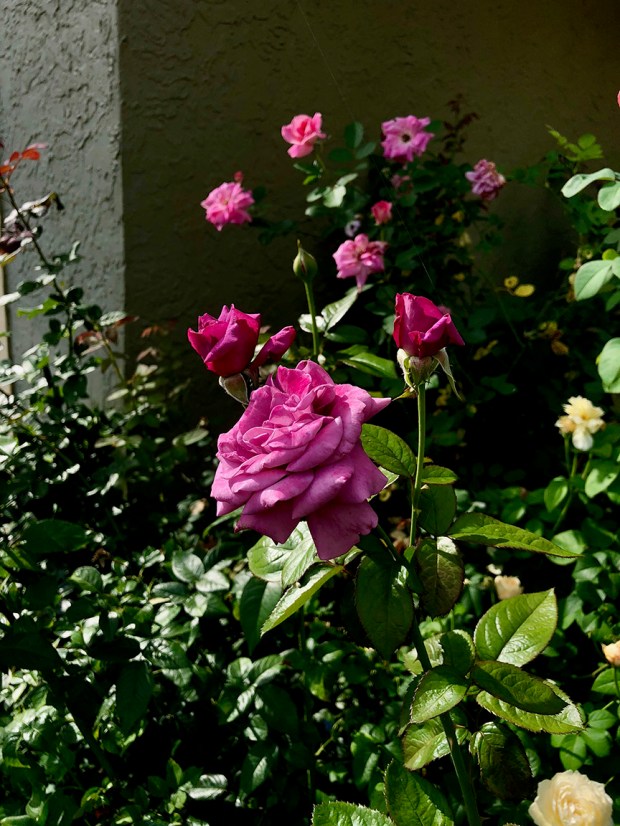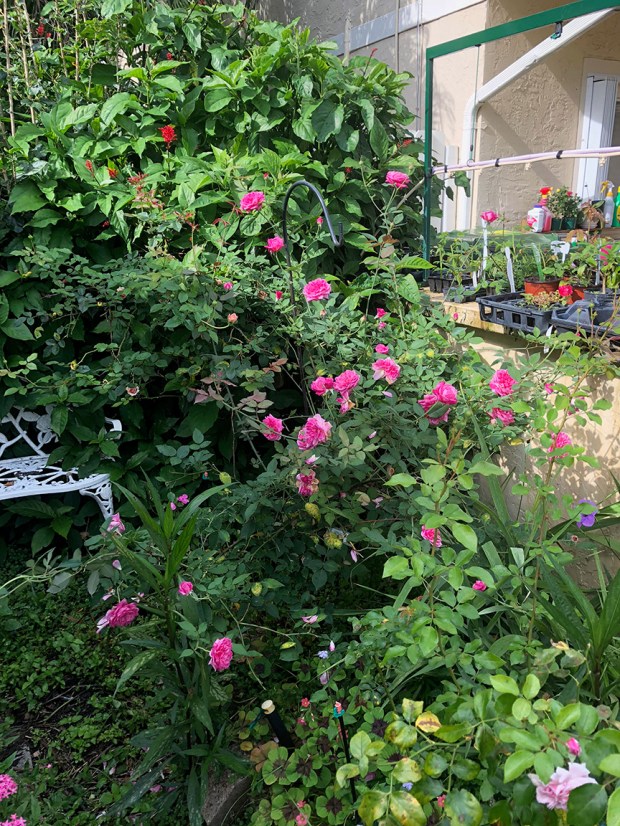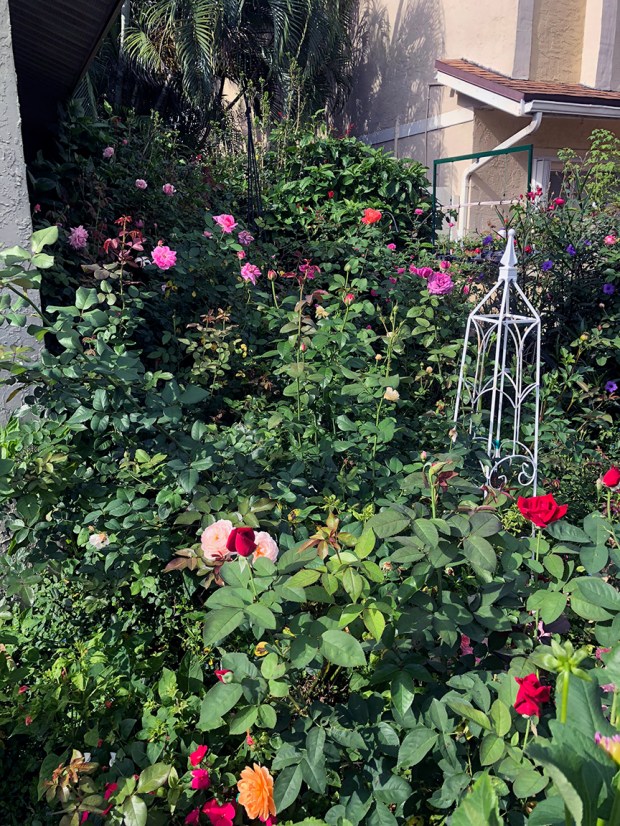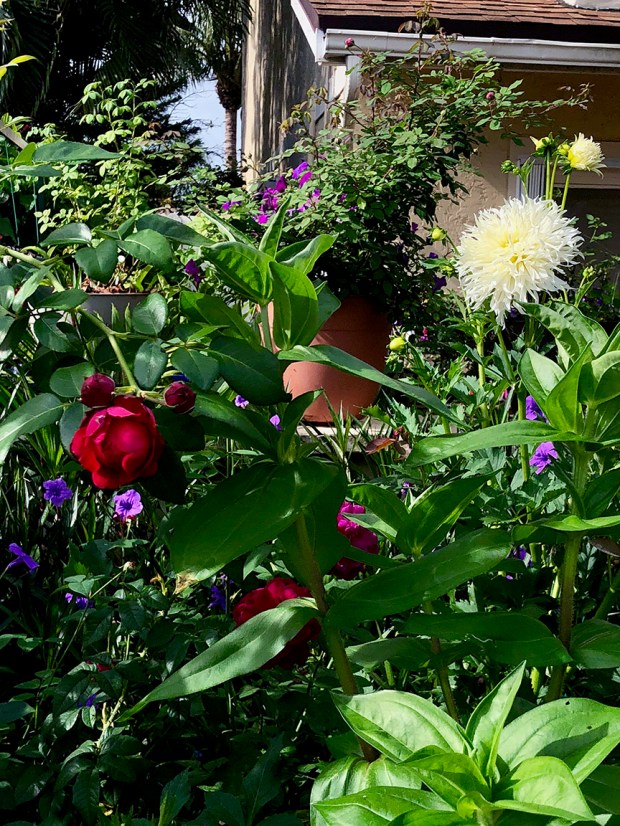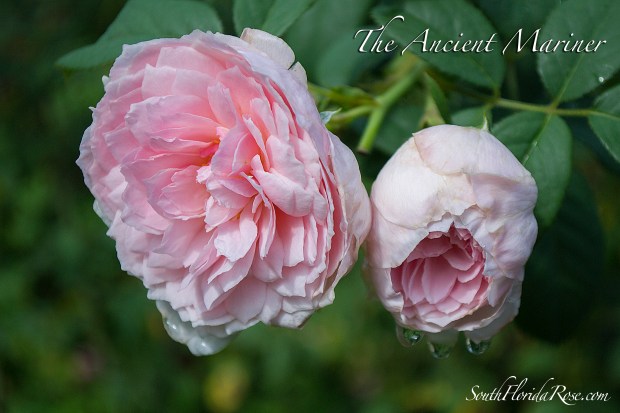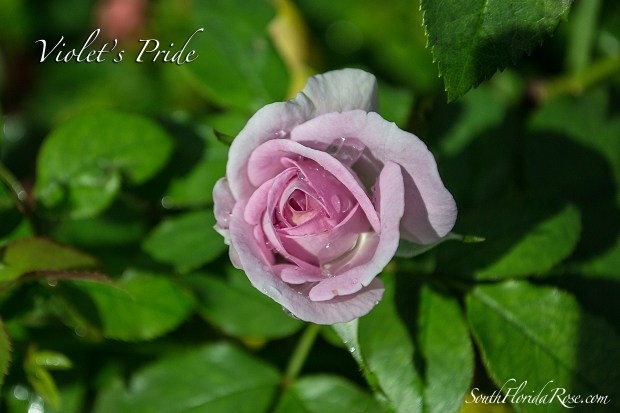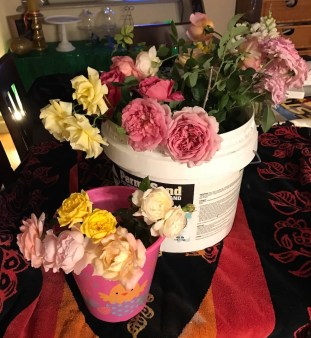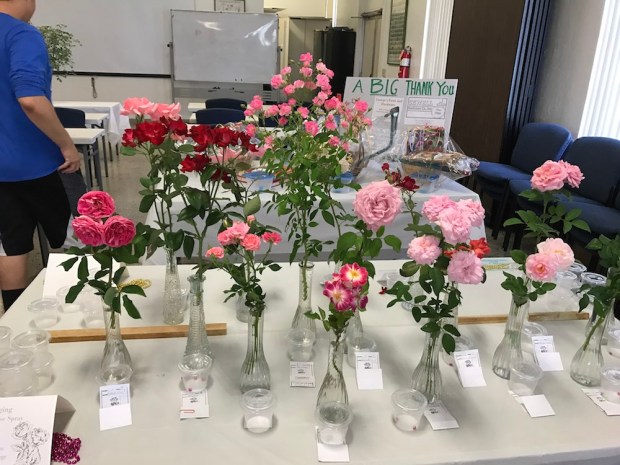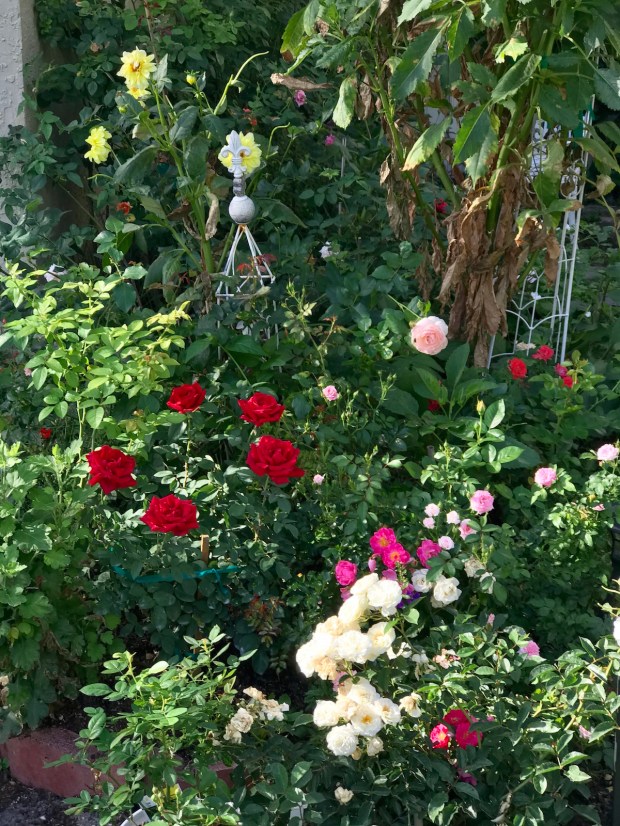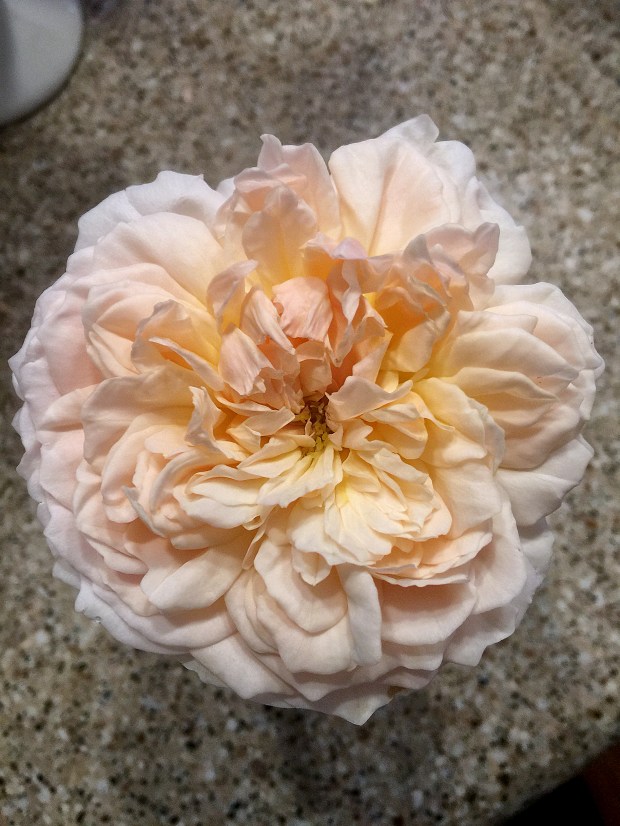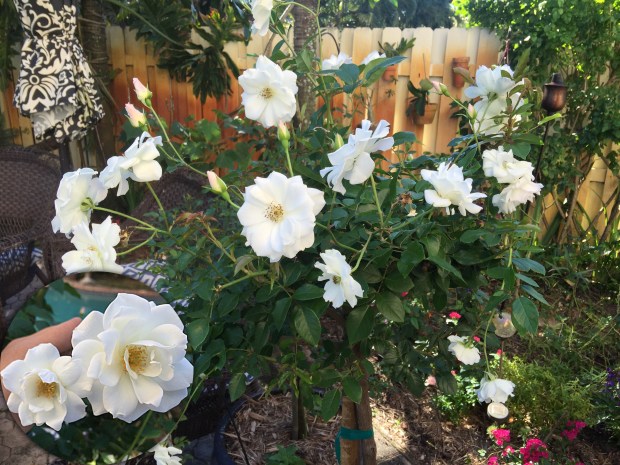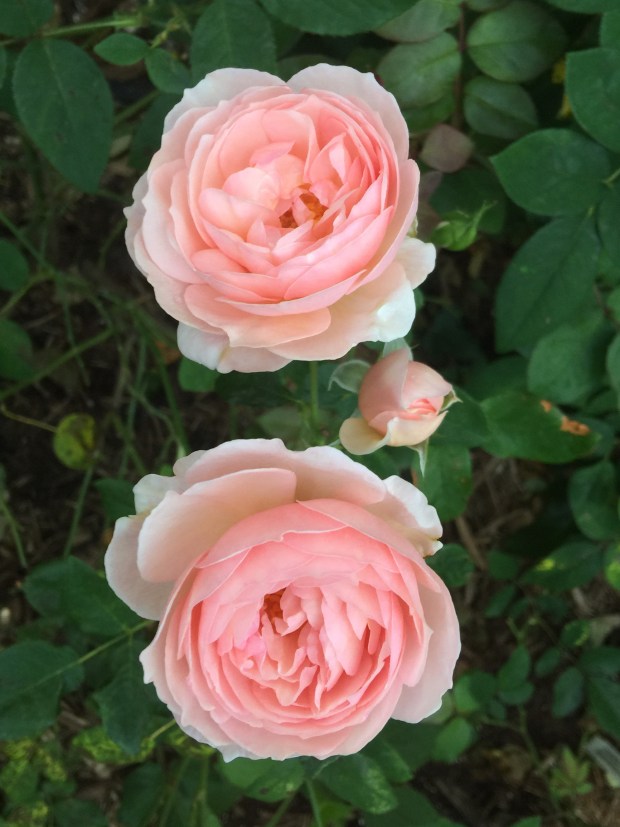The only thing I love just as much as growing roses, is thinking about my roses. I enjoy passing the time thinking to myself about which roses have done well, which need replacing and which new ones I’d like to try. It’s a calming thought as I drift off to sleep or as I sit in the garden enjoying my coffee, tea or the occasional glass of champagne. No other hobby gives me the joy and satisfaction that my garden brings me, so this year I decided to give out “rose awards” to my favorite roses.
Its been fun just thinking about which roses would win which prize (a prize which of course is all in my head, as I’m the only judge and the only competitors are the roses I grow). But pointing out the roses, even if it’s just to my readers, and myself helps me to plan my future garden. Its wonderful to grow the roses that do well for me and knowing which ones thrive in our challenging climate lets me plan a better garden and helps me look for future roses that may do well because of certain characteristics. So without further ado, I give you the 2017 South Florida Rose Awards!
Most Prolific Bloomer: For the most prolific bloomer we actually have a tie. Both Pat Austin and Sweet Drift take the prize.
This slideshow requires JavaScript.
Pat Austin: Pat Austin is rarely without bloom, and once the first flush is over, the buds are already growing for the next flush. Pat is an outstanding rose here. It’s vigorous, healthy and has a nice, habit. It grows as a climber for me, but a very bushy climber with little support. Its blooms nod, which is actually lovely considering she grows 10 feet tall, and the blooms look down at the viewer nicely. She has a very unique fragrance that’s all her own. I have no idea how to describe it, but it’s pleasant and like no other rose I grow. Her only fault is that the blooms do not last long neither on the bush nor in the vase. However she is an excellent garden plant and will bring show stopping beauty to the garden. Pat is an overall; winning rose here in South Florida. Mine grows on Fortuniana purchased at Cool Roses in West Palm Beach.
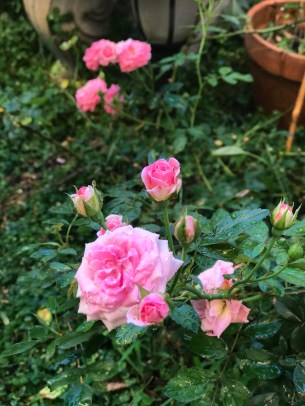
Sweet Drift Rose, a very prolific bloomer in South Florida
Sweet Drift: Sweet Drift is the baby pink rose from the ever popular Drift Rose Series by Star Roses & Plants. Sweet drift is my best performing rose by far. Anywhere I put it, it thrives. Even if its in partial shade, Sweet Drift pretty much out performs all the other roses, including all the other drift roses in the garden. I currently lost count on how many I grow because I have them in every little corner where a large rose wont fit. Sweet drift blooms continuously to the point where it is never without blooms. It has a compact, spreading habit that is perfect for a border or ground cover. It is disease free, never loosing its leaves even in the dead of summer. It’s a no-fail, bulletproof rose in our climate. If you are new to growing roses, Sweet Drift will not fail you.

Wedding Bells produces some of the largest blooms in my South Florida garden
Largest Bloom: Wedding Bells
This was a tough category to decide because in cooler weather many of the roses can produce much larger blooms than they do in the heat of summer. However, Wedding Bells takes the cake for constantly pumping out large blooms with lots of substance. The blooms are also slow opening and last long in the vase. Wedding Bells is a wonderful rose for many reasons, including its vigor, health and willingness to bloom.
Other contenders that did well in this category were Evelyn, Teasing Georgia and Dames De Chenonceau. But Wedding Bells’ constant production of large blooms takes the prize.
Runner Up: Dames De Chenonceau
Best Disease Resistance: Wedding Bells/Sweet Drift
Again we see these two fabulous roses in the winners circle. It’s no coincidence that the healthier the rose is, the better it will bloom. Both of these varieties grow without disease in our no-spray garden, which is practically unheard of. Both perform well, but are used for very different places in the garden. Wedding Bells is a large bush with very large blooms, while Sweet Drift is a miniature ground cover that stays low and has small blooms the size of a quarter. However both are practically indestructible in my garden.
Runner Up: Earth Angel
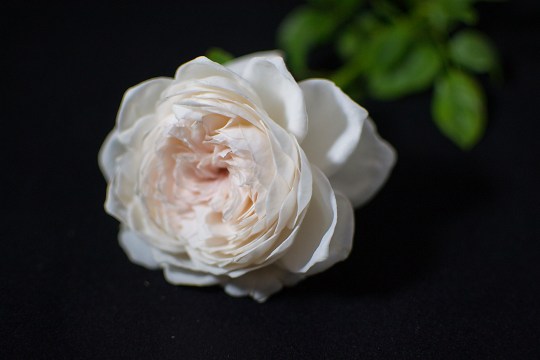
Earth Angel offers excellent disease resistance and vigor.
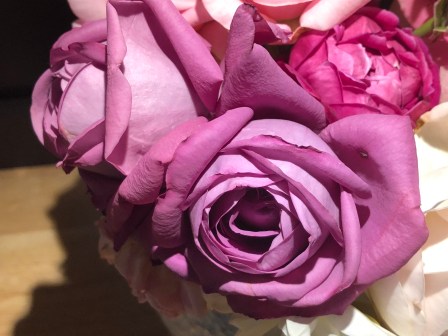
Plum Perfect’s beautiful purple blooms grow easily on a healthy, prolific shrub.
Most Unique Color: Plum Perfect
Plum Perfect is perfect in every way. This rose has grown well for me on its own roots, in a no spray garden. It blooms profusely and has the most beautiful shade of plum-purple blooms. For a rose with such amazing color, its wonderfully healthy and vigorous. Plum Perfect is truly a superb rose and I’ve yet to even try it on Fortuniana. Its only fault being that it takes a break from growing in the summer and it has no fragrance. But it makes up for it the rest of the year.
Runner Up: Pat Austin

Teasing Georgia is one of my most vigorous growers.
Most Vigorous: Teasing Georgia
Never have I had a rose so willing to grow as Teasing Georgia. This David Austin rose grows with very little help on my part and will send out long, strong shoots with healthy leaves. Its only fault may be that it’s more bush than bloom, but when it does produce its blooms, they are fantastic. This easy to grow yellow rose is a rarity as most yellow roses are riddled with disease and lack vigor, so a yellow rose that is so eager to grow is worth its weight in gold in South Florida.
Runner Up: Wedding Bells
This slideshow requires JavaScript.
Most Beautiful Bloom: Dames de Chenonceau
Beauty of bloom is so subjective, but for me this Delbard rose has the most beautiful blooms in my garden. I’m not sure what it is about it, whether it’s the large size of each bloom, the amount of petals, or the fact that sometimes the stamens show through the petals, but definitely the shade of pink catches my eye. It’s the warm salmon pink with the center leaning towards yellow that makes me swoon. If only she bloomed more often and had better disease resistance, she’d be my #1 rose.
Runners Up: Spirit Of Freedom, Evelyn
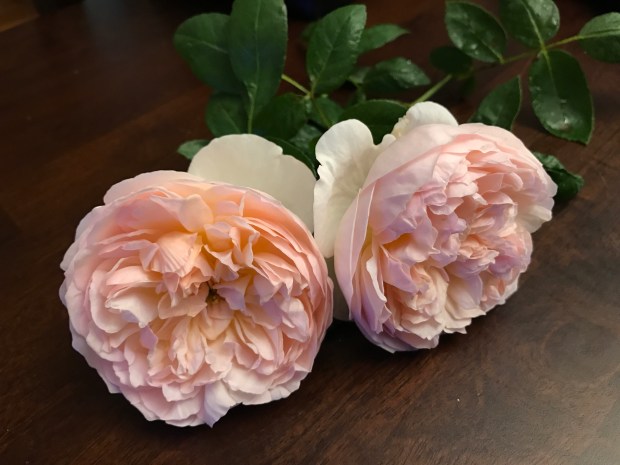
Evelyn is the winner for most fragrant rose.
Most Fragrant: Evelyn
Evelyn is my most trusty rose for fragrance, but I love this rose for many other reasons too. Not only is she vigorous and a prolific bloomer, but her blooms are large, fragrant and last well in the vase. She has it all. Evelyn is truly a perfect rose and my most deliciously fragrant. Mine grows on fortuniana.
Runner Up: Nahema
Best Growth Habit: Sweet Drift
For me Sweet Drift has the best growth habit. Its always full from top to bottom, never has leggy growth or long gangling arms and always stays compact. If only all roses grow like she does.
Runner Up: Bordeaux
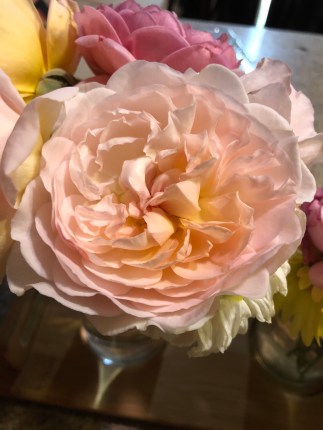
Bliss, although new, shows every sign of being a great rose.
Most Promising New Rose: Bliss
One of my most recently planted roses that seems to be a real winner is the Kordes rose Bliss. This rose came as a tiny half-gallon rooted cutting back in September. After being planted in the garden she immediately took off. She lived through the fall with out a speck of disease, which is the most trying time in my garden. Yet she thrived and bloomed profusely. To this day she’s grown well, healthy and has bloomed incredibly well for a rose so small. Not only that, the blooms are large and tough lasting and lasting both in the vase and on the bush. If this rose continues to grow like this, it will be one of my top performers hands down.
Runner Up: Summer Memories
And now we present the best roses in each color for your South Florida garden:
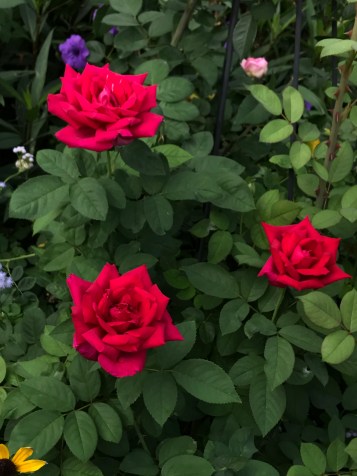
Chrysler imperial rose is one of the best reds for South Florida
Best Bright Red: Chrysler imperial
If you like the hybrid tea form, there is no other red like Chrystler Imperial. This traditional HT shaped rose is tough, disease resistant and fragrant. No other red hybrid tea has performed as well for me as Chrysler Imperial. The rose was named after the automobile in 1954. Mine grows on fortuniana.
Runner Up: Louis Phillippe
(Note: Louis Phillipe is by far a more vigorous and better growing rose for South Florida, however, its not quite red and the blooms are small and somewhat plain)
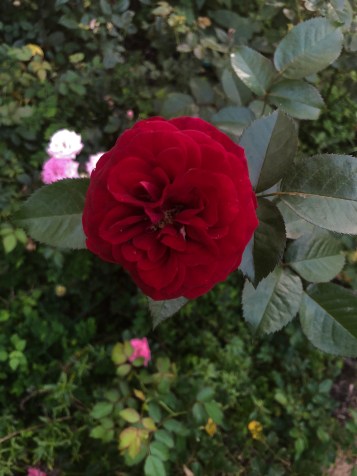
Kordes’ Bordeaux Rose is an easy care choice for South Florida
Best Deep Red: Bordeaux
This newer rose by Kordes has been a tough contender in the red department. The coloring is more of a deep red than a bright red, more like the wine for which it was named after. But the vigor, disease resistance and ease of care has put this rose on the list for best red. If you want an easy to grow deep red rose with beautiful, old-fashioned blooms. Try Bordeaux.
Runner Up: Darcey Bussell

Pope John Paul II is by far the best white rose for South Florida.
Best White: PJPII
I usually prefer the old fashioned rose shape like the English roses by David Austin, however, there has been no better performing white rose in my garden as Pope John Paul II. This rose blooms profusely and can have very large blooms in the cooler months. It has decent resistance to disease and can be grown without spraying if given good morning light and air circulation. As an added benefit, the blooms have a lovely fragrance and make a good cut rose.
Runner Up: Windermere
Best Pink: Wedding Bells
What can I say? Wedding Bells is just a superb rose. I love my Austins, but none has grown as strong and as healthy as Wedding Bells. This rose is virtually indestructible, even during chili thrip season she thrives. I can’t say that about any other pink, even the famed Belinda’s Dream pales in comparison.
Runner Up: Spirit Of Freedom
This slideshow requires JavaScript.
Best Dark Pink: Vincent Godsiff
Vincent Godsiff is a semi-double china rose (sometimes referred to as a Bermuda rose) that grows well on its own roots here in South Florida. It blooms profusely and has strong, vigorous growth. Although it may get some black spot and loose its leaves, it continues to grow, and bloom without fail. The blooms are a lovely shade of deepest pink and have interesting veining. They also last remarkably well in the vase for such a dainty looking rose.
Runner Up: Mrs. BR Cant
This slideshow requires JavaScript.
Best Pale Pink: Duchess De Brabant
Duchess de Brabant, also known as the Teddy Roosevelt rose, is an exceptional rose in every way here in South Florida. Not only does she grow well on her own roots without the need for sprays, she constantly pumps out the most dainty baby pink blooms in the garden. Almost always in bloom, Duchess is an easy care rose that will cover a fence or eyesore in about 2 years time with very little care. This is one of those roses that make you wonder why its not growing in every South Florida garden.
Best Apricot: Evelyn
Evelyn, as I mentioned before, is an extraordinary rose. Relatively healthy, its her vigor that makes her thrive here. The blooms are nearly always perfectly formed which says a lot for a rose. Not only that, she is fragrant, gorgeous and wonderful in the vase.
Runner Up: Bliss (still in review)
Best Orange: Pat Austin
No other orange rose has ever compared to the profusion, beauty and vigor of Pat Austin. Its overall one of the best performing roses in South Florida despite the fact that its orange, and it will most likely be the best orange rose you have ever grown in our climate.
Runner Up: Summer Sun (still in review)
This slideshow requires JavaScript.
Best Multicolor: Dick Clark
There are not very many hybrid tea roses that thrive in our climate. Sure, you can grow nearly any Hybrid Tea rose with lots of pampering and spraying, but that’s now how we like to garden here at South Florida rose. Our goal is to recommend and grow roses that need little pampering and give lots of rewarding blooms in return. Dick Clark is one of the few Hybrid Tea roses that does this. Yes it will black spot in the most humid times of the year, but it will also keep growing and blooming year round. The blooms start off deep maroon and fade to bright pink with yellow in the centers. No two blooms are alike; and with a good amount of disease resistance and vigor, Dick Clark is a truly wonderful rose for Florida.
Runner Up: Summer Sun (still in review)
Best purple: Plum Perfect
I find it perplexing that Kordes roses are not more commonly grown, not just around here in Florida, but in all parts of the humid South. Kordes has been working harder on disease resistance as their number one trait in a rose than any other breeder. No wonder they are well ahead of the game when it comes to healthy, easy care roses.
Plum Perfect is a relatively new Kordes rose that has been turning heads not only for its beautiful purple blooms, but for its health and vigor. Purple roses are not easy to come by and this rose has not only achieved a truly plum colored rose (not one fading to pink as so many others do), but it has succeeded in doing so on a vigorous, prolific, healthy rose that grows well on its own roots and has a nice bushy habit. What more could anyone ask for in a rose?
Runner Up: Violets Pride
Best yellow: Teasing Georgia
A multiple South Florida Rose award-winner, Teasing Georgia is a rose that took me by surprise. After planting it about a year and a half ago as an own root, two-year-old plant (meaning the plant is about 4 years old now), Teasing Georgia has taken off and wowed me. It didn’t set a single bloom in its first year in my garden, but spent a good long while putting down roots and becoming established. This year, she took off and started shooting out large canes with big yellow blooms on the end. Teasing Georgia is a true climber, but can be grown as a shrub with strong pruning. I currently have two in my garden, one as a climber/rambler and one I am training as a large bush. The bush has bloomed less (due to all the pruning) but is a stronger growing plant. The climber has bloomed more and has produced some of the most scrumptious yellow blooms I have ever seen. Over all, this rose is a true winner. Yes, it will take time to establish and it’s a large rose (more rose than bloom at this point) but I bet, like most Austins, it will only get better with age. Still, it has the best yellow roses and is the healthiest growing yellow in my garden. The gorgeous blooms make up for its few faults.
Runner Up: Golden Fairy Tale
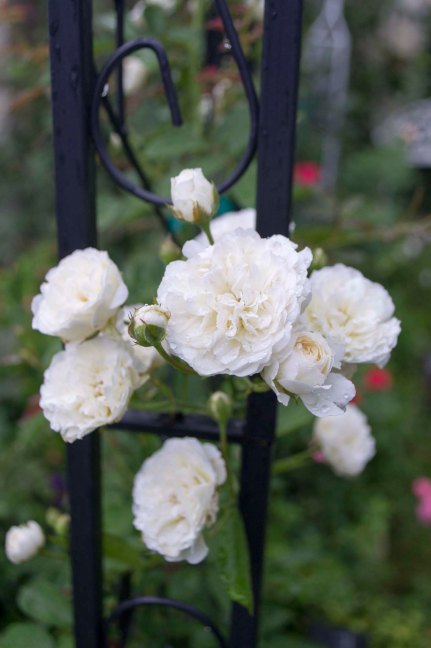
Best Climber: Prosperity
On the list for best climbing rose, Prosperity takes the cake. Prosperity blooms continuously and produces more blooms than any other climber in my garden. She’s also a very well behaved climber producing lots of bloom on a relatively compact plant for a climber. Mine grows on fortuniana and I’m interested in getting Pink Prosperity, a sport of Prosperity with pale pink blooms, in the future.
Runner Up: Spirit Of Freedom
There you have it, the best performing roses for 2017. Cant wait to see what 2018 brings!
 We’ve once again reached the worst part of the growing season here in South Florida.
We’ve once again reached the worst part of the growing season here in South Florida.










 Every year around the beginning of May my garden is at its peak. I recently few shots of the view of my garden right before the rains came. I’m impressed with my Chrysler Imperial that seems to almost always have blooms nowadays, its exceptionally healthy for a hybrid tea and when its in bloom it adds lots of interest to the garden. Sweet Drift like always, is full of blooms no matter where I plant it.
Every year around the beginning of May my garden is at its peak. I recently few shots of the view of my garden right before the rains came. I’m impressed with my Chrysler Imperial that seems to almost always have blooms nowadays, its exceptionally healthy for a hybrid tea and when its in bloom it adds lots of interest to the garden. Sweet Drift like always, is full of blooms no matter where I plant it.
